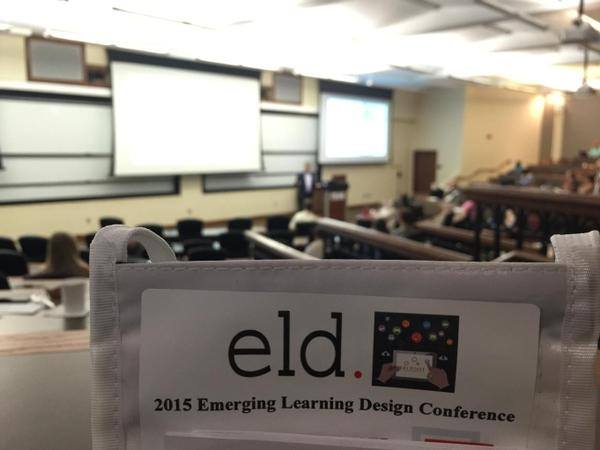I recently attended the Emerging Learning Design (ELD) conference at Montclair State University, titled Connect, Construct, Create: Engaging Approaches to Teaching and Learning.
I attended, “Level Up Education” session, presented by Nick Amaral. Amaral discussed his gamified classroom and why it works. Another session, “Characteristics of the Millennials, creating best practices”, presented by Salvatore Ferraro, presented results from a research study asking 17,000 students about what motivates them. Drawing from both sessions, I’ll discuss three reasons why gamifying your classroom engages students (millennials, in particular).
1. Students want feedback early and often.
Salvatore Ferraro’s presentation pointed out that Millennials want feedback as often as possible. In gaming, feedback is instant and constant. When a stranger shoots and kills you, you quickly realize he is an enemy. When you drink a potion and instantly gain health, you realize the potion is good for you.
By increasing the opportunities for feedback, you can help students succeed in your course. For instance, rather than assign students a single paper worth 30% of their final grade, it helps to divide the paper into 3 steps, an outline worth 5%, a draft worth 10%, and a final paper worth 15%. At each of those steps, students will receive valuable feedback that will increase the quality of their work.
2. Students want the freedom to fail.
In gaming, you will fail many times. Games are typically designed with checkpoints, so that you don’t restart the entire game from the beginning when you fail; you only restart from the last completed checkpoint. In the classroom, if a midterm and final are the only forms of assessment in your course, you are not providing your students with any checkpoints. If they fail the midterm, then it’s “Game Over” and they have failed your class. To improve upon this model, you can either, (a), allow them to fail more often by repeating assignments, or (b), provide students with more checkpoints to assess their progress.
Nick Amaral employs both strategies in his classroom. He uses many low-stakes assignments, which he allows students to repeat in order to achieve a higher grade. In this way, students have the ability to test their comprehension on lower-stakes assignments first, to better prepare them for the higher-stakes assignments like midterms and final exams. They can fail the low-stakes assignments as many times as necessary without feeling like they have failed the class.
3. Students want to compete.
Perhaps because they are accustomed to organized sports, Millennials enjoy competition and are team-oriented. Competition and games go hand-in-hand. A little competition can be incorporated into just about any classroom.
Nick Amaral uses leader boards to motivate his students. Using coded usernames called “learner tags,” students can see their grades on a Google Sheet displayed to the entire class. The Sheet is color-coded to track individual progress as well as progress as a class. So students compete not only individually, but as a class against Nick’s other class sections. In this way, students are motivated not only to improve themselves and increase their individual ranking, but they are also motivated to support struggling students, increasing their overall rank as a class.
What do you think of these strategies? Do you use any of them in your classroom? Leave a comment below!
This post originally appeared on Rutgers’ OIRT Blog on June 22, 2015.
